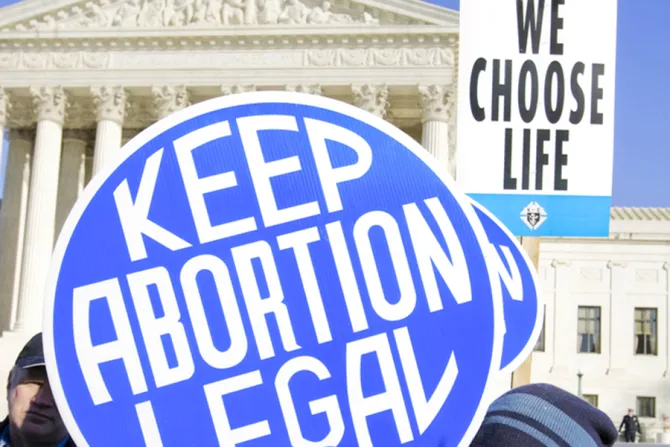Washington D.C., Jul 1, 2020 / 02:01 am
Monday's ruling in June Medical Services v. Russo came as a major letdown for the pro-life movement in the U.S., dashing hopes that the Supreme Court would use the opportunity to strike at the foundation of legalized abortion in the country.
But the Louisiana law being questioned in the June Medical Services case was just one of several hundred abortion restrictions that have been passed at the state level in recent years.
Numerous other state laws are working their way through the court system, and any one of them could arrive at the Supreme Court in the coming months, paving the way for another major ruling.
Here are three cases for pro-life observers to watch:
Ohio's ban on aborting babies with Down syndrome
Several states have recently enacted laws banning abortion on the grounds of sex, race, or disability of the baby. Last year, the Supreme Court avoided ruling on the issue, which was among the provisions of a challenged Indiana law. The court upheld a regulation requiring aborted babies to be aborted or cremated, but declined to make a decision on the remainder of the law, saying the topic had not yet received adequate consideration at the appellate level.
Further appellate court consideration of such laws could come out of Ohio, where a 2017 law banning abortions based on a Down syndrome diagnosis is currently being challenged. The law was quickly blocked from taking effect, and a panel of judges from the 6th Circuit Court of Appeals upheld the injunction in October 2019. In a rare move, however, the full appellate court then agreed to rehear the case. Arguments were heard in March, and a ruling has not yet been issued.
Attorneys defending the Ohio law say it operates within the framework established by Roe v. Wade and subsequent cases, because the state has a compelling interest in protecting the Down syndrome population from discrimination and elimination. Those challenging the law disagree. The losing party will likely appeal the decision to the Supreme Court, setting up a chance for the high court to rule on the issue of "eugenic abortions."
Texas' law prohibiting D&E abortions
A few states have also banned Dilation and Evacuation (D&E) abortions, sometimes known as "dismemberment abortion," a method of abortion which is most commonly performed in the second trimester.
In November 2017, a federal district court blocked a Texas ban on D&E abortions, saying it was unconstitutional because it placed an "undue burden" on a woman's "right to an abortion." Texas appealed, and the case went before the 5th Circuit Court of Appeals.
In May 2019, the appeals court announced that it would not issue a decision in the case until the Supreme Court had ruled in June Medical Services. With that ruling now delivered, the Fifth Circuit can move forward with a decision in the Texas case, considering whether the logic of Monday's ruling is applicable to the D&E ban.
Heartbeat abortion bans
The Supreme Court has declined several times in the last five years to hear cases involving laws which ban abortion after a baby's heartbeat is detectable – often around six weeks into pregnancy. But if the court were to consider one of these laws, which a handful of states passed last year, it could be among the most significant rulings handed down in this generation.
While pro-life laws are often crafted to fit within the structure of state regulatory authority established by Roe v. Wade and other decisions, heartbeat bans openly defy Roe v. Wade, meaning a court challenge to one of these laws could set the stage for Roe itself to be reconsidered. Supporters of these laws are hopeful that one will arrive before a favorable Supreme Court, which will use the opportunity to overturn the 1973 case that established a nationwide "right to abortion."
While stricter bills offer greater protection for unborn babies, they are also more difficult to defend in court. When Mississippi recently saw both a 15-week ban and a six-week ban struck down, the state's attorney general said she wants to focus on appealing the 15-week ban, which may have a higher chance of success than the six-week ban.
(Story continues below)


